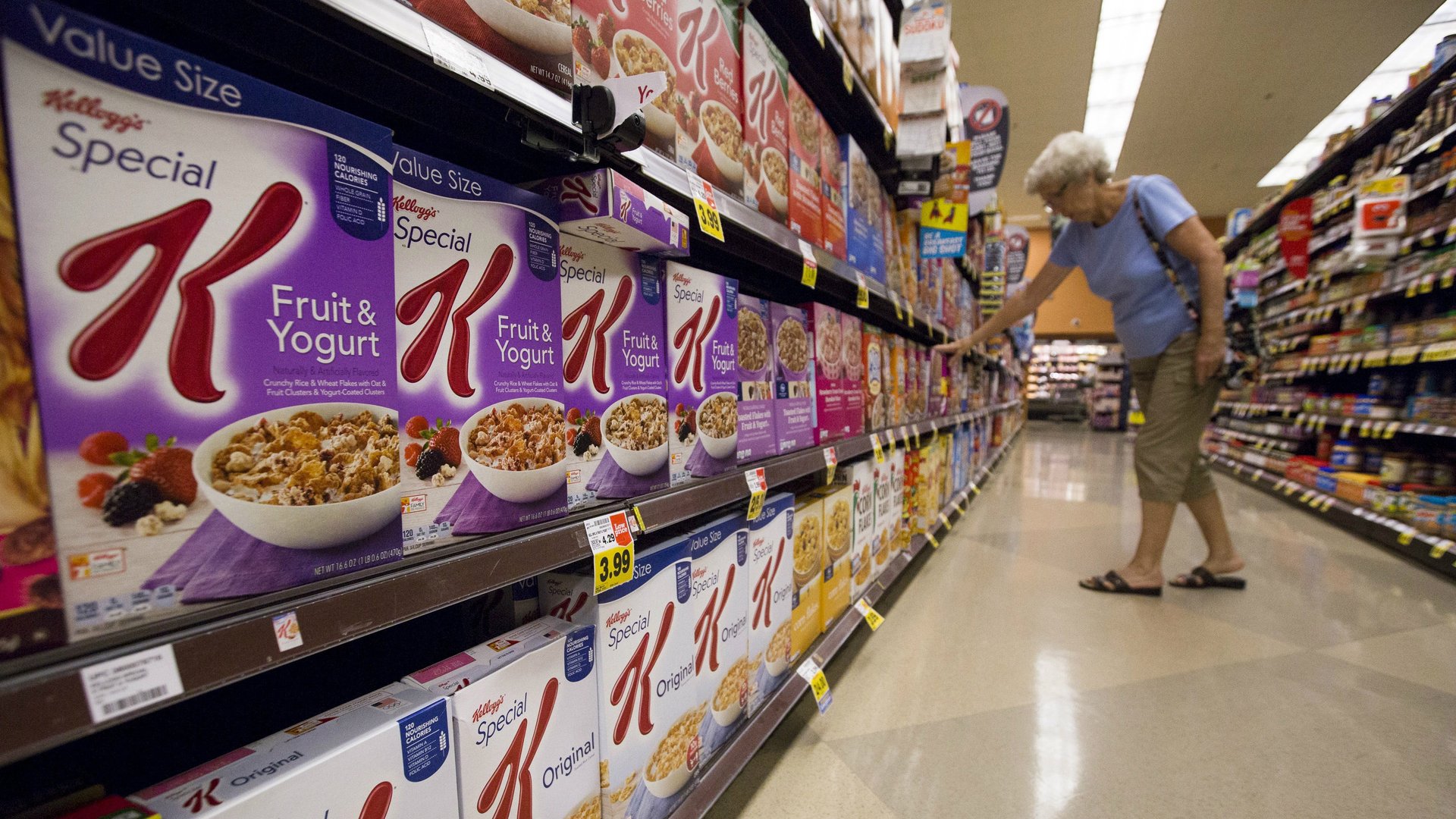Inside the secret, backroom deals big brands make to vie for control over grocery stores
Turns out, almost every American has a close connection to one of the biggest power brokers in the food system. It plays out in nearly every US neighborhood, every time you pick up a box of cereal.


Turns out, almost every American has a close connection to one of the biggest power brokers in the food system. It plays out in nearly every US neighborhood, every time you pick up a box of cereal.
While much of the relationship between supermarkets and food manufacturers remains veiled in secrecy, a recent report by the Center for Science in the Public Interest popped the lid on the money that changes hands to control how food is displayed in supermarkets. The report detailed the mysterious methods used by supermarket chains to make billions of dollars off the world’s largest food companies, and called on the Federal Trade Commission, the Securities and Exchange Commission, and state attorneys general to launch antitrust investigations.
Here’s how it works. Under the current setup, supermarket chains charge food companies three types of fees, which wind up heavily influencing what foods and products will fill shelf space:
- Companies pay slotting fees to introduce a new product to store shelves, be it a new flavor of ice cream or new potato chip brand.
- They also fork over money for pay-to-stay fees, which ensure product will stay on store shelves. This isn’t always cash—often it’s a discount, or free cases of food sent to supermarkets.
- There are also display fees, which go toward getting premium placement, such as at the end of store aisles, alongside flashy signage intended to attract shopper attention, or even areas in which they don’t naturally belong.
The argument put forward by the report is that big food companies such as Nestlé, Unilever, Kellogg, and Pepsico can afford to spend more money on these fees than smaller food companies, making what should be a competitive marketplace an uneven playing field instead.
The costs can be prohibitive at every layer of the grocery market. Small chains charge up to $9,000 to introduce a new product into the freezer section at all locations, according to Frozen & Refrigerated Buyer, a trade publication. The CSPI report also referenced a 2001 study published in the Journal of Law and Commerce, which detailed how Truzzolino Pizza Roll paid $25,000 to Safeway to get in all its locations, and Apple & Eve spent about $150,000 to get a fruit-punch product into a limited number of stores in the northeastern US.
The pay-to-display system has transformed how companies spend money to get consumer eyeballs in front of food, and how supermarkets manage inventory. In addition to fees, supermarket chains often appoint food companies as “category captains,” who literally draw up how brands and packages will be displayed on shelving, including which get prime real estate and which do not. It’s a role often delegated to the leading companies in each category, according to the report, and one that keeps manufacturers happy.
With that kind of cash and clout being thrown around, the authors of the Law and Commerce study concluded that such fees “are not a mechanism for new product introduction, but rather a means for thwarting it.”
For Safeway in particular, fees from food manufacturers provide important padding to the company’s bottom line. The supermarket chain reported profits of $9.7 billion in 2014—according to the CSPI report, about $2.5 billion of that came from placement and display fees.
On the flip side, the report outlined the struggles of a small, California-based ice cream brand, Clemmy’s, which it depicted as being shut out of the retail system by prohibitive fees. Clemmy’s wound up declaring bankruptcy in 2015.
“You don’t start a food company thinking you have to deal with payola,” Gordon said in the report. “But that’s what it was all about.”